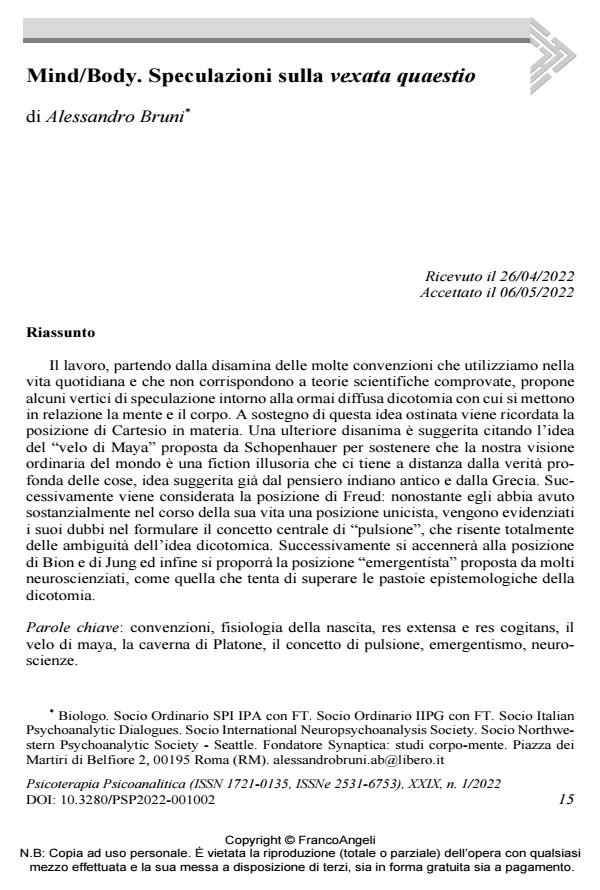Speculations on Mind/Body Controversy
Journal title PSICOTERAPIA PSICOANALITICA
Author/s Alessandro Bruni
Publishing Year 2022 Issue 2022/1
Language Italian Pages 12 P. 15-26 File size 193 KB
DOI 10.3280/PSP2022-001002
DOI is like a bar code for intellectual property: to have more infomation
click here
Below, you can see the article first page
If you want to buy this article in PDF format, you can do it, following the instructions to buy download credits

FrancoAngeli is member of Publishers International Linking Association, Inc (PILA), a not-for-profit association which run the CrossRef service enabling links to and from online scholarly content.
The paper begins with a discussion of the most common non-scientific conven-tional ideas regarding the mind/body dichotomy, strongly sustained by the philos-opher Descartes. It suggests some hypotheses about their origins. The ancient Ve-dic idea of "Maya illusion", and some suggestions connected to the classical world of Greece, will then be considered. This will be followed by a discussion of Freud’s position on the matter and of the epistemological difficulties and doubts in propos-ing "drive" as a "limit concept" between mind and body. After Freud, the positions of Bion and Jung will be mentioned and finally the "emergentist" position of some of the most important neuroscientists of our age.
Keywords: Conventional ideas, physiology of birth, res extensa and res cogitans, the veil of maya, Plato’s cave, the concept of drive, emergentismo, neuroscience.
Alessandro Bruni, Mind/Body. Speculazioni sulla vexata quaestio in "PSICOTERAPIA PSICOANALITICA" 1/2022, pp 15-26, DOI: 10.3280/PSP2022-001002